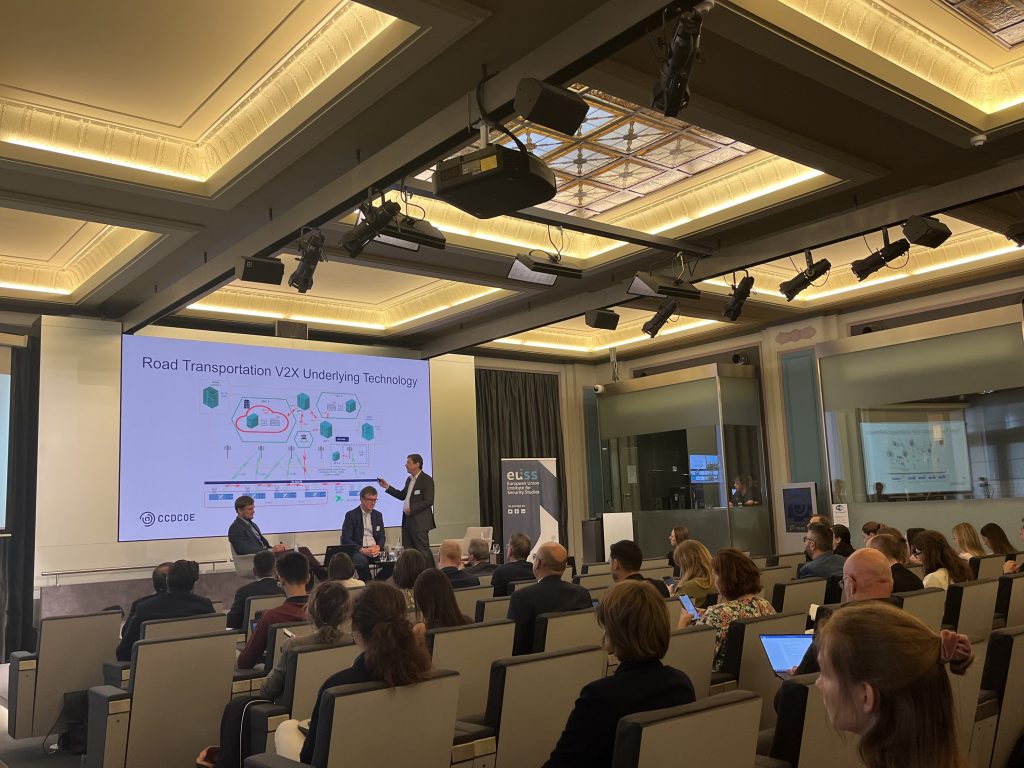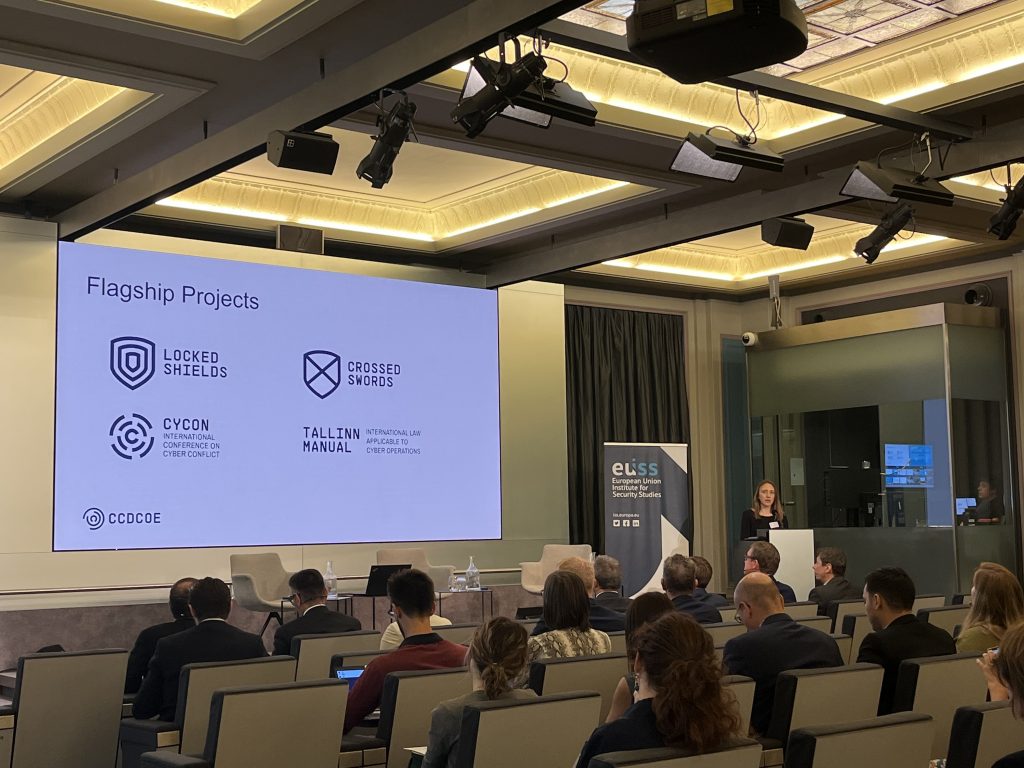On 5 July the NATO Cooperative Cyber Defence Centre of Excellence (CCDCOE) and the EU Institute for Security Studies (EUISS) held a public event in Brussels, launching a new research report of the CCDCOE entitled „Research Report Military Movement Risks From 5G Networks“.
The event gathered over 50 experts from the EU, NATO, industry and academia. The event featured Manfred Bodreaux-Dehmer, Chief Information Officer, Office of the Chief Information Officer, NATO; Roberto G. Cascella Head of Sector, Standardisation, Technology, Supply Chain and Strategic Autonomy, European Cyber Security Organisation (ECSO); and Per Ljungberg Director, Architecture & Portfolio, Ericsson. The discussion panel was moderated by Dr Raluca Csernatoni, a visiting scholar on European Security and Defence, Carnegie.
Summary of discussions held at the event is available here.
In 2021, the CCDCOE launched a 13-month project on 5G supply chain and network security. The project addresses the technical, strategic, legal, and policy issues of next generation telecommunication networks for NATO allies and partners. This research report is the second publication of the project.
The report examines a potential NATO military movement scenario in 2030 and its associated interactions with 5G technology in relation to seaports and road transportation. Smart seaports and smart roads were chosen as the most likely use-cases for 5G applications in the given time horizon. Descriptions of the two use-cases are followed by an analysis of related cybersecurity risks and mitigation measures.
This publication is a product of the CCDCOE. It does not necessarily reflect the policy or the opinion of the Centre or NATO. The Centre may not be held responsible for any loss or harm arising from the use of information contained in this publication and is not responsible for the content of the external sources, including external websites referenced in this publication.

